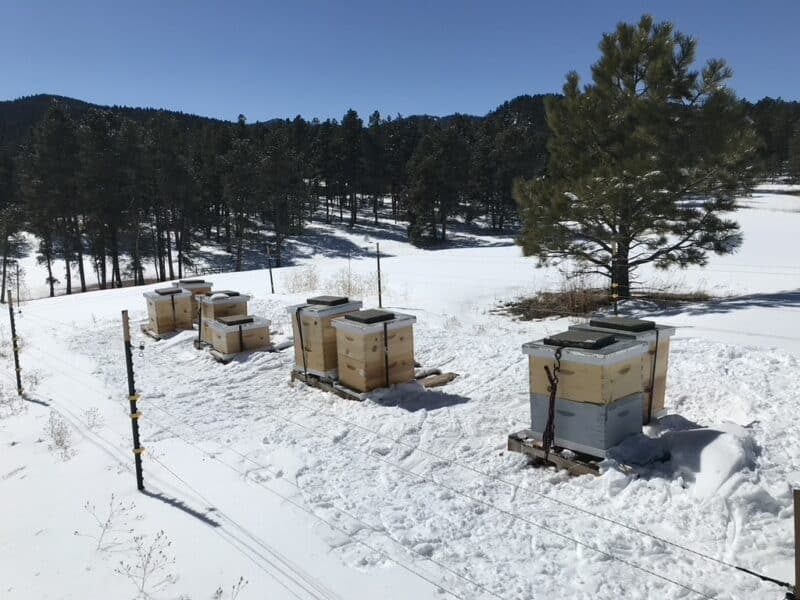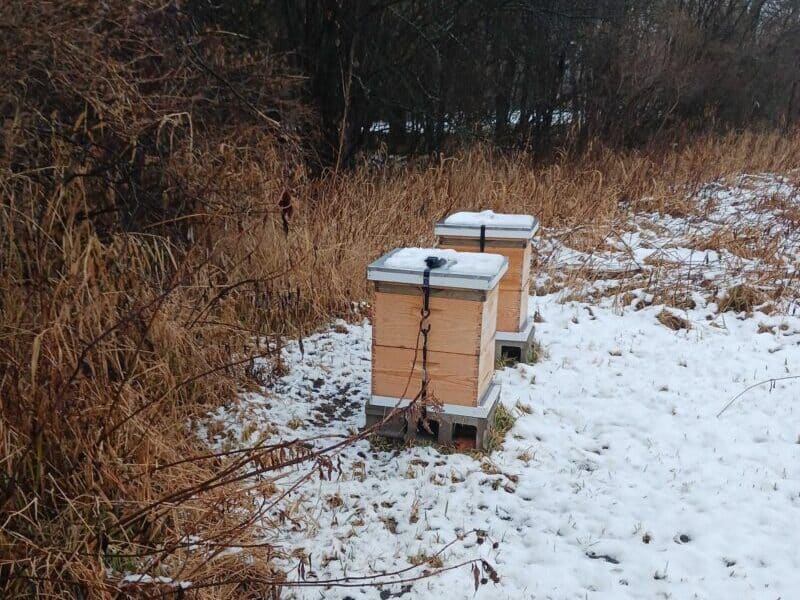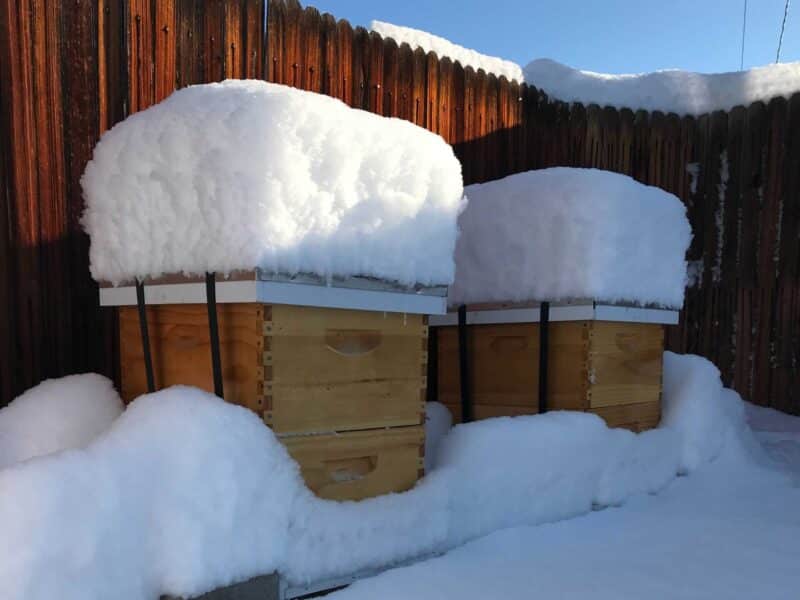Contents
- Where Do Bees Go in the Winter?
- What Do Bees Do in the Winter?
- What is the Difference Between Normal Worker Bees and Winter Bees?
- FAQs
Where Do Bees Go in the Winter?
During the course of the spring and summer, honey bees amass stores of honey to provide nourishment during the winter. Productive hives will produce excess honey, which is good news for us! Here at Best Bees, we will only harvest honey the bees do not need (this is the basis of ethical honey harvesting).
In early fall, their queens slow down laying eggs and eventually stop laying altogether. The male drones are pushed out of the hive to limit the demand on the colony’s food supplies. This is called the expulsion of the drones. Drones don’t build comb, they don’t make honey, they don’t help forage; they can’t even guard the hive, because they don’t have stingers.
Their one and only job is to mate with a different hive’s queen bee. If they accomplish their task, it results in their death. So, the only drones left in the hive this time of year are just dead weight on their hardworking sisters, the worker bees — contributing nothing, but still consuming valuable hive resources.
The worker bees can tell come the fall that the days are getting shorter and the temperatures are dropping; this signals to them that resources will soon become scarce. So, they herd and push the drones out of the hive, leaving them to fend for themselves. The drones are unable to survive on their own and quickly perish.
But where do the worker bees go in the winter? Well, when daytime temperatures fall below 57 degrees Fahrenheit, they retreat to their hives and cluster together around the queen, next to their honey supplies, to stay warm as the temperatures outside get colder.
What Do Bees Do in the Winter?
When outside temperatures fall to 23 degrees, the bees on the inside of the cluster begin to vibrate their wings, generating heat to maintain an optimal temperature of 95 degrees within the cluster’s center, where the queen is located. A winter cluster is made up of an outside shell of bees around three inches thick that is very compressed. The bees’ heads face inward; within the center of the winter cluster, bees are less compressed and move around caring for the brood.
During the course of the winter, honey bees cycle between inner and outer layers, allowing near-frozen outer bees to rewarm, while their replacements take up position as living insulation on the clusters’ exteriors. It’s a highly efficient survival strategy that, under natural conditions, assures most colonies will survive until warm weather when new supplies of pollen and nectar reappear. There are a number of manmade and natural threats, though, that can impact hives’ ability to survive:
- Limited sources of pollen and nectar in late summer and fall can leave hives with stores of honey that are too small to feed them through the winter.
- A weak queen who produces small broods can mean there aren’t enough bees to generate the heat needed to survive extreme cold. Exposure to pesticides can have the same effect.
- Any unwanted moisture hives can bring hive temperatures down to dangerous levels.
- Parasite infestations—such as varroa mites—can weaken and kill enough bees to compromise their ability to stay warm.
What is the Difference Between Normal Worker Bees and Winter Bees?
In our article “Hive Hierarchy: Drone Bee, Worker Bee, and Queen Bee”, we discuss the three castes within a honey bee hive, the differences between their development, and the various roles and responsibilities they perform for the colony. What we don’t talk about in that article are the “winter bees.” These bees are so distinct from their sisters — both in structure and in function — that some scientists believe they constitute a fourth caste. So if, when you ask, “where do bees go in the winter,” you’re asking about the summertime worker bees, the answer is more complicated than they simply go into the hive!
The technical name for these bees is “diutinus,” a Latin word that means “long lasting.” Normal worker bees live for about four to six weeks, while a queen bee can live for years. A substance called vitellogenin is credited with keeping the queen alive. Vitellogenin is produced in the fat bodies of bees and enhances immune function and increases lifespan.
The queen bee will lay the last eggs through September into early October. They are fed less protein than their warmer weather counterparts, due to the limited pollen resources. The bees that develop from these eggs are born with larger “fat bodies” – a nutrient rich, vital organ in the abdomen that acts as an energy storage center. A key product of the fat body is vitellogenin; the very same substance that gives queen bees their longevity.
These winter bees are physiologically different from normal worker bees. They live for months, and have lower metabolic rates, which means they do not need to consume as much food. All of these characteristics are advantageous to these bees for surviving through the winter.
FAQs
Q: Where do bees go in the winter?
A: Honey bees retreat to their hives and cluster inside in a tight ball around the queen bee to generate heat.
Q: Do bees die in the winter?
A: No, bees do not die in the winter if they’ve prepared sufficient honey stores, have a strong queen, and their beekeepers have mitigated any pest populations.
Q: What do bees do in the winter?
A: Honey bees do not hibernate; instead, they stay inside the hive in their winter cluster. The worker bees that cluster through the winter are diutinus bees. They have larger fat bodies than their spring and summer counterparts, increasing their longevity and lowering their metabolic rate.
Q: What is a cluster?
A: The cluster refers to the tight ball the worker bees form over the queen and honey stores. The workers rotate through the inner to outer layers of the cluster, taking turns in the colder outer layers and warmer inner layers.
Q: What is the expulsion of the drones?
A: This is when the worker bees kick out the male drone bees to limit the demand on the colony’s food supplies.








